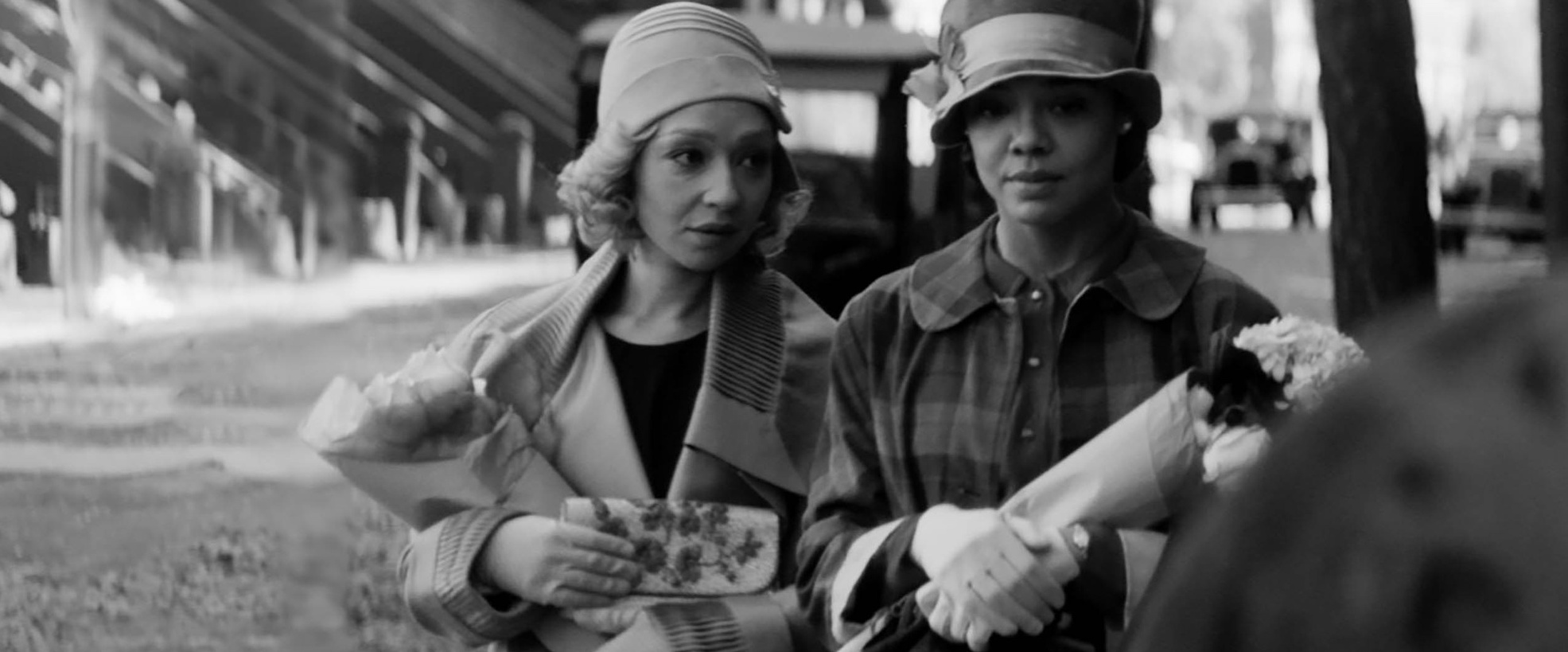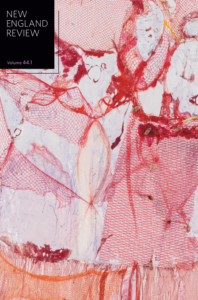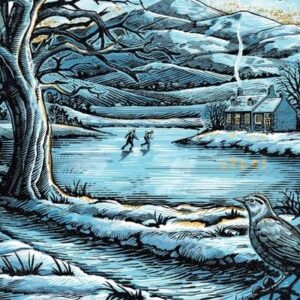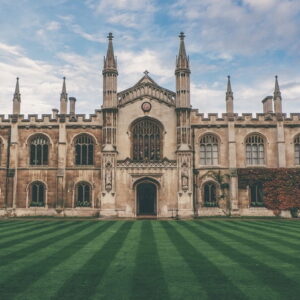
Not White But Not (Entirely) Black: On the Complex History of "Passing" in America
Herb Harris Explores How His Grandparents' Defied Racial Categorization
“It’s funny about ‘passing.’ We disapprove of it and at the same time condone it. It excites our contempt and yet we rather admire it. We shy away from it with an odd kind of revulsion, but we protect it.”
–Nella Larsen, Passing
*Article continues after advertisement
I started with a group of boxes that looked like the oldest ones in the attic. The packing tape easily lifted away, no longer sticking to the cardboard, and wine glasses and dishes emerged from pages of the Washington Post from the 1970s. Several heavy boxes contained papers and photographs belonging to my grandparents, but there was one surprisingly light box. I opened it to find a collection of hand-sewn dolls and animal puppets, just a dozen or so of the thousands I knew my grandmother had made when she was a volunteer at Children’s Hospital over the years.
Among the clowns, frogs, and bunnies was one doll that had clearly been sewn with greater care and detail than the others. I recognized it as Grandma’s work, but it had a design I’d never seen before. It was a girl with light pink skin, blue eyes, and blond hair, wearing a long floral dress with a lace collar and a pink bow. I flipped it over to reveal another girl, this one with very dark brown skin, black hair, and brown eyes.
The two figures were joined at the torso, and the exaggerated contrast between their features gave the second doll a blackface quality. I remembered that toys like these were called Topsy-Turvy dolls and vaguely associated them with offensive Jim Crow cartoons and minstrel shows. Why would my grandmother, a Black woman, make such a thing? Grandma had died more than twenty years before, and, holding this strange doll in my hands, I had the sense that this was her last word on race.
A little research reveals that Topsy-Turvy dolls originated during the time of slavery. No one can ascribe a single meaning or purpose to them, but their dual identity suggests a connection to the mixed-race children who were a part of the plantation world. These children were enslaved people who could be bought or sold by law. They were also relatives of their owners: cousins, half-siblings, sons, and daughters. These relationships were usually denied, but they were often open secrets.
The children might be symbols of the master’s potency or shameful reminders of his transgressions, or they might be objects of love or victims of abuse, but their existence was always charged with hidden meanings and deep conflicts. They could only be talked about with code words filled with ambiguity, like the language my grandparents used when they talked about race. Topsy-Turvy dolls were part of this language. They embodied many things that could never be said.
The name Topsy-Turvy also suggests disruptive questions. Which end is up, and which end is down? Who am I?
With Emancipation, Topsy-Turvy dolls had a strange popularity that lasted into the next century. The fascination with these dolls paralleled the emergence of demeaning Jim Crow images and artifacts, and dolls made at this time were often caricatured representations of Black women. For some people, the dolls would have the cruel purpose of making fun of those with “tainted” blood.
They may also have reinforced binary notions of racial identity and the One-Drop Rule. But the name Topsy-Turvy also suggests disruptive questions. Which end is up, and which end is down? Who am I? Whatever meaning the dolls had, by mid-century, they had fallen out of fashion. They’re now sold on the internet as collector’s items, but they are largely unknown in popular culture.
*
My family is descended from these children, the offspring of slaves and slave owners. Our light complexions and mixed African and European features are manifestations of the sexual exploitation of enslaved people that were commonplace in this world. A lineage of victims and perpetrators is coiled into our DNA.
There were many families like mine in the Black community of Washington, DC, where I grew up. After generations of mixing and recombining, the visible traits of race became a continuum with no boundaries. People were beige, taupe, tan, sienna, café au lait, and every intermediate shade. Their hair could be any texture and color, from blond to black. Grownups constantly talked about black and white people, but I saw no one who fit these descriptions.
Race had been a source of confusion throughout my childhood, and I wondered if the original purpose of Topsy-Turvy dolls might have been to help mixed-race children understand their identities. As an object of play, the dolls might have enabled these children to grasp the paradox of who they were and understand their relationships with half-siblings who might eventually become their owners. I could imagine my fair-skinned grandmother as a little girl playing with one of these dolls, which might have been handed down from her grandmother.
Grandma and Grandpa, my paternal grandparents, had very light skin and straight hair. As a child, I wondered if they were the “white people” I had heard about. I quickly learned that this was not something you could just ask people about, especially those of my grandparents’ generation.
Any talk of race made them stiffen, and I could feel their discomfort. When they spoke about it, they seemed to use a code language I couldn’t understand. They sometimes referred to themselves and their friends as “colored people,” and yet they were the least colored people I knew. Their light complexions and graying hair made them seem like pale, fading pastels.
“Are they white?” I asked my mother when I was about five.
The answer was a definite “No.”
“Are they black?” was the reflex follow-up.
“Yes, but…,” she said, and what followed was a conversation about race that unfolded over many years and never really finished.
My earliest memories of my grandparents came from the weekends I spent with them when I was about five or six. They were convenient babysitters who lived a block from our house. Their rowhouse was older and a little larger than ours. The front yard was tiny, but it was the envy of the neighborhood. Grandma was a gifted gardener, and every year she ensured that her flowers were the first to bloom and the last to fade.
Their house was much more ornate than ours, with fancy moldings and accents. Grandpa kept his dental practice in the basement. A sign bearing his name hung from a small lamppost in the front yard. I was named after Grandpa, and he was named after his grandfather, a former slave who had come to Washington in the 1830s.
The living room was from a different era. There were claw-foot tables, wingback chairs, and a tufted Victorian couch. A tall, cylindrical glass cabinet held porcelain figurines and old photographs in ornate frames. There were pictures of my grandparents when they were young and a few pictures of my great-grandparents. In a very elaborate frame was a daguerreotype of Grandpa’s grandfather. There were dark, somber landscapes and still-life paintings on the walls. The room was like a museum where the slow ticking of a clock on the mantelpiece was the only evidence of time passing.
My grandparents belonged to the first generation of the twentieth century. They were very reserved people who had a formality that often seemed stuffy. They had family dinners on Thanksgiving and Easter Sunday. Grandpa always wore a jacket and tie to these holiday events, and Grandma served the elaborate meals in courses on fancy dishes with silverware that belonged to my great-grandmother. The meals seemed to stretch out for hours, and I was expected to show good manners that were impossible for a fidgety child.
Even so, I always had fun on weekends with my grandparents. They took me to the zoo and the many monuments and museums around the city. We were like tourists, seeing the sights for the first time. We would climb into their enormous sky blue ’57 Pontiac Super Chief. It had massive, round fenders over the front wheels that reached to the back of the car, where they formed fins that reminded me of wings, and a pair of raised, white arrows extended along each side of the car. The arrows pointed forward and seemed to give the car momentum, even while sitting still. It looked like something that should be able to fly. Grandma always drove, and Grandpa liked to take in the scenery and point out the monuments and buildings as we passed.
We often went to Union Station to pick up the newspapers on Sunday mornings. We sat at tables in the atrium and watched the travelers coming and going. A man would announce an arrival over the speaker, and then a wave of people poured through the doors, hurrying across the atrium to jump into cabs and cars waiting outside the circle.
As we watched the people, my grandparents would reminisce about trips they had taken long ago. They told me how they would take the train or drive up and down the east coast. From Boston to Miami, they visited every major city. New York and Atlantic City seemed to be their favorites for weekend jaunts. I got bored as they repeated the same stories every week. I could not understand what was so exciting about eating in restaurants and staying in hotels.
“We could go anywhere, and no one knew who we were,” said Grandma with amazement.
“No one!” Grandpa agreed with a wink and a conspiratorial tone that broke into laughter.
This inside joke mystified me. I couldn’t understand what this excitement was about, but I could see a transformation in my grandparents. They were suddenly happier and younger-looking than I had ever seen.
“We were just part of the crowd, like everybody else, having fun,” continued Grandpa.
Their marriage concentrated many threads of white ancestry into a single lineage that became part of my heritage.
They exchanged glances, and the laughter rose to a crescendo. Grandma laughed so hard she had to dab away tears with a handkerchief. I tried to join in, but neither of them was willing to explain the joke to me. What was so great about going someplace where nobody knew you, or about being a part of a crowd or staying in a hotel? I hated going to restaurants with my grandparents. They liked stiff white tablecloths and slow waiters, while my idea of eating out meant fast food, French fries, and shakes.
*
Along with the Topsy-Turvy doll, I found many letters, papers, and photographs in those boxes, including the pictures I remembered from the glass cabinet in their living room. I searched them for clues that might help explain my grandparents to me—the meaning behind the doll but also behind their private jokes.
I knew that my grandparents were the grandchildren of enslaved people who were blood relatives of their owners. Having white relations sometimes came with significant privileges on the plantation that often continued after emancipation. During the Reconstruction, a light complexion might come with opportunities for advancement, preferential treatment by whites, and educational opportunities.
Having a fair complexion was a conspicuous marker of privilege and status. There was great diversity within this community, but light skin was the most salient feature among the elite of Black Washington. By my grandparents’ generation, complexion had taken on a life of its own. Light skin was no longer just a proxy for privilege; it had become a thing valued for its own sake. An exclusive community emerged, sometimes known as the “Brown Paper Bag Society” because entry supposedly depended on having a skin tone lighter than a brown paper bag.
They came of age between World War I and the Roaring Twenties and began their life together in a place of unusual promise and privilege. In a phrase popular in their day, they were “light, bright, and damn near white.” My grandfather’s education, and the social prominence of his parents, enhanced his status in this community. My grandmother came from a more modest background. Her father was a carpenter who repaired brickwork. It was said that he worked on the plaster moldings in the Capitol.
However, he could not read. It took time for my great-grandparents to warm up to their daughter-in-law, but her fair complexion made her an acceptable match for my grandfather. Although they had no great wealth or power, my grandparents could feel like they belonged to an exclusive aristocracy that held a place of privilege within the Black community. Their marriage concentrated many threads of white ancestry into a single lineage that became part of my heritage.
There was a large photograph of Grandma as a young woman and another of Grandpa in his World War I uniform, and among the papers were a few letters that Grandpa wrote during his military service. He served at Camp Zachary Taylor in Louisville, Kentucky. The camp is best remembered as the place F. Scott Fitzgerald was stationed during the war. Fitzgerald used the camp as the site where his fictional character Gatsby served during the war. It was here that Gatsby met Daisy, a Louisville debutante.
Grandpa was an Enlisted Private in the Medical Corps in the 814th Pioneer Infantry, one of the few black regiments within the segregated army. He was a fully credentialed dentist and should have received a commission as an officer. They gave no reason, but Black Commissioned Medical Officers were extremely rare. The army mirrored the Jim Crow world, and officers of color were unacceptable to many in the military. He made a formal request to the Adjutant General:
I am 24 years of age, a graduate of the University of Pennsylvania, a post-graduate of the University of Pennsylvania Dental School, a licensed practitioner of Dentistry in the District of Columbia for the past three years, and I feel that I can render a creditable record as a Commissioned Officer in the Medical Reserve Corps.
The application was met with a flat denial. Several appeals got nowhere. The appeal process continued until the Armistice in November of 1918. Two months later, a letter recommending approval of the Commission was issued, but it was no longer relevant. Grandpa had returned to civilian practice.
Among the other letters, I found a correspondence between Grandma and Grandpa when he was stationed at Camp Taylor. Even then, they shared private jokes that made fun of race and colorism.
Dearest Alice,
I received your dear letter and the lock of your beautiful hair. I showed your hair to several of my friends, and they were all anxious to know where I obtained it. I had described you previously to these chaps as being a hazel-eyed blond, so naturally they thought your hair should be much lighter. I held it in the sunlight which made it appear a light golden, its true color. So, I won the day.
I can picture Gatsby passing the time with fellow soldiers bragging about his new girlfriend, Daisy. He would have wildly exaggerated her beauty in ways calculated to stir the envy of his friends. He would have spun incredible fantasies about the romantic life they would have together after the war.
Grandpa was no less imaginative in describing Grandma with blond hair and hazel eyes. Was Grandma offended by the way he exaggerated the whiteness of her features? I don’t have her side of the correspondence, but the tone of my grandfather’s letter suggests that it was something they both saw as humorous.
With the demobilization of soldiers after World War I, relations between white Washington and Black Washington deteriorated rapidly. Large numbers of unemployed men gathered in cities across the country. Grievances and racial tensions multiplied as the economy sagged.
Lynchings rose across the South. In the summer of 1919, “race riots” broke out across the nation. In Washington, a rumor spread that a Black man had been arrested for the rape of a white woman. This rumor was enough to spark four days of violence. Mobs of white men roamed the streets attacking Black people and destroying Black-owned businesses. The police refused to intervene, and the Black community organized to defend itself.
My grandparents lived in an affluent Black neighborhood near U Street, where many Black businesses were located. The community erected barricades, and men armed with rifles positioned themselves on rooftops. Light-skinned people like my grandparents had as much reason to fear the neighborhood’s defenders as the white rioters. President Wilson eventually called in the National Guard to end the violence.
Known as the Red Summer riots, the violence of 1919 widened the racial chasm that divided the city. The restaurants and theaters my grandparents could once enter were no longer open to Black people. It is said that these establishments hired special bouncers skilled at spotting people like my grandparents who might try to pass as white to gain entry.
Anyone who saw them would have thought they were a very unremarkable couple—an unremarkable white couple.
As I learned of their history and encountered it first-hand among their things, I was finally beginning to understand how the freedom of being able to go anywhere had a special meaning to my grandparents. They had watched as the wall of segregation was erected across Washington. I could guess the full meaning of the joke they had shared when I saw a small black-and-white photograph among the old pictures and papers, a photo I hadn’t remembered seeing before.
They appeared to be in their twenties, sitting together on a bench. Grandpa was very casual with rolled-up shirtsleeves and no tie. Grandma wore a floral dress. The background looked like a train station. They must have been traveling by train, perhaps returning from one of their weekend trips. They were like the people they loved watching on Sunday mornings at Union Station. Anyone who saw them would have thought they were a very unremarkable couple—an unremarkable white couple.
I finally understood my grandfather’s joke and grasped the meaning of the phrase Grandma repeated with amazement in her voice: “We could go anywhere.” When they went on these weekend trips, they could forget all the rules, boundaries, and constraints that governed every aspect of their lives. The great weight of race would drop away if they simply allowed others to mistake them for the white couple they appeared to be. No one would know! I could feel the exhilaration they might have experienced stepping into a moment of freedom. There was the risk of discovery, but this must have made it more exciting.
Were they ever tempted to remain on the other side of the color line they so easily crossed? Many thousands of light-skinned Blacks made this transition during the decades that spanned the Reconstruction into the mid-twentieth century. While the Great Migration saw millions of Blacks move to northern cities to escape the Jim Crow south, a secret migration occurred among those who could pass as white. They severed relationships with friends and family, adopting new names and identities. Those who succeeded in making this transition might have found prosperity, opportunity, and freedom from the bondage of segregation.
But the change came with tremendous costs, including losing ties to one’s community. To adopt a white identity meant an absolute break from friends and family. It also meant keeping terrible secrets from one’s new community and living with the constant fear of exposure. Fictional stories of passing are filled with wrenching denials and disavowals of loved ones, dramatic outings, and tragic endings. The real-life experiences of those who passed were probably no less dramatic and certainly filled with pain and fear.
Despite the risks and challenges, passing was not uncommon, and my grandparents knew of people who had made this choice. They lived at a time when the incentives and the opportunities were never greater. Black people had come to Washington from the South to escape the terrorism of white supremacy and to seek economic advancement through stable government jobs. Segregation followed them. The Wilson administration closed off many opportunities and imposed policies that entrenched and institutionalized racism.
With the crash of 1929 and the Great Depression, Washington’s Black community experienced catastrophic wealth losses. A flourishing real estate business that my grandfather’s grandfather had built was reduced to a few rental properties that my grandfather inherited. During these years, tenants could not be relied upon to pay the rent. My grandfather’s dental practice was no better, and patients who could pay for his services were rare. He often had to accept payments in kind for his services.
Why did they stay? White America struggled during these years, but with a dental degree from the University of Pennsylvania, my grandfather could have built a far more lucrative practice on the other side of the color line. My grandparents weighed many factors against the compelling material benefits of passing. My grandparents’ deep roots and family ties to the Black community had value that the dire circumstances of the Depression could not overcome.
Ultimately, the hardships of the 1930s strengthened my grandparents’ ties to the community. People survived through a cashless economy of gifts, favors, trades, charity, and universally shared sacrifices. Many of my grandfather’s friends and relatives of his generation had joined professions such as medicine, dentistry, and law with the expectation of building prosperous careers, but most found themselves struggling to subsist. The members of these proud families swapped goods and services to survive. Each owed the other more than any could repay.
It was Grandma who kept our family afloat financially. As the daughter of a mason and carpenter, she had all the skills of a professional contractor. She managed and maintained the rental properties, doing all the repairs from floor to ceiling. Years later, when she was seventy-two, my cousin bought an old house near Dupont Circle that needed extensive remodeling. Grandma showed us how to knock down and rebuild lath and plaster walls. She pointed the chimneys and exterior walls and repaired a staircase like a master carpenter. During the Depression, her steadiest income came from sewing. Self-taught, she was an accomplished seamstress who could mend and alter any garment. She found many white clients who were happy to pay for her services. This income often exceeded what my grandfather made in his dental practice.
When the Depression eased, my grandparents resumed their weekend jaunts from time to time. They danced across the color line, but Grandpa always returned to his dental practice and Grandma to her garden.
*
It was Christmas Eve when my parents told me that Grandpa had died. I was about seven, and death had never touched my life before. I knew that he had been sick for a long time. My last memory of him was a few days before his death. He took my hand and seemed to be trying to shake it. His skin was cold, but he had a surprisingly firm grip. He made jerky movements that were more side-to-side than up-and-down. He must have known that he was saying goodbye.
What was it like to be such a paradox? Each generation in my family has had to struggle with this question.
My grandmother survived him by more than thirty years. She immersed herself in creating the thousands of hand-sewn dolls, puppets, and stuffed animals that she donated to patients at Children’s Hospital. They would accumulate in piles on every surface in her house until we would take them to the hospital by the carload. In 1986, she received a Washingtonian of the Year award after donating more than ten thousand puppets to the hospital. She kept going into her nineties, making several thousand more.
She had a few standard patterns that she varied to make Easter bunnies, circus clowns, and Raggedy Ann dolls. She also created many dolls of her own design that could be used to tell fairy tales to children. One of her favorites came from the story of Little Red Riding Hood. Half of the doll was a girl in a red hood whose dress could be flipped up to reveal the other half of the doll, a figure with a grandmother’s face on one side and a wolf on the other. She made many other dolls that embodied different characters from children’s fairy tales.
The storyteller could create surprise and enchantment by suddenly revealing a new character as the story unfolded. Little Bo Peep would transform into a sheep, and Goldilocks would become a bear. Each of the thousands of dolls and puppets she made told a story and had a place in a child’s imagination.
But what story did the Topsy-Turvy doll tell? The doll’s floral dress is a clue. Grandma loved these patterns and often wore them. In the photograph I found showing my grandparents at the train station, she was wearing a floral dress with a white lace collar that was very much like the Topsy-Turvy doll’s. Maybe Grandma made this one doll with its double identity to tell her own fairy tale, a personal one, which was at the same time a kind of self-portrait.
Grandma died just a week before her hundredth birthday, outliving nearly all her contemporaries. She departed like the last person to leave a dance, turning off the lights and softly closing the door behind her. Her memory failed during her final years, and I was left with many questions. Finding the doll in my attic seemed to be the beginning of one last conversation. I have kept it near my desk, where I see it daily. I still get a little of the shock I felt when I first saw the dark brown girl attached to the light pink girl at the waist.
What was it like to be such a paradox? Each generation in my family has had to struggle with this question. The conversation continues, but my grandmother was never one for abstract words. With a needle, and thread, she showed us who she was.
__________________________________

“Topsy-Turvy” by Herb Harris appears in the latest issue of the New England Review.
Herb Harris
Herb Harris grew up in Washington, DC, where he attended Georgetown University. He subsequently obtained his medical degree from the University of Pittsburgh School of Medicine and did his residency training in psychiatry at Yale. He currently lives in Arlington, Virginia. His essays have appeared in Creative Nonfiction, Hippocampus, Solstice Literary Magazine, the Tahoma Review, and Under the Gum Tree. His essay “A Tourist at Home” was nominated for a Pushcart Prize. His essay “Portrait of the Artist as a Black Man” was the winner of Solstice’s 2021 Michael Steinberg Award for nonfiction.












